
What is an Argumentative Essay?
Argumentative essays are a common assignment given by educators and are an exciting opportunity for you to practice the valuable skill of persuasion. Argumentative essays are, at their core, pieces of writing that aim to convince the reader of the writer’s own opinion. Let’s look at the elements that form argumentative essays, and some tips on how to write the best one possible. Example thesis: Tobacco products should be made illegal, as they present severe and well-documented health risks to the public.
Elements of an Argumentative Essay
Position: This is the side of the argument that the author is taking. In this case, the author is arguing that tobacco products should be made illegal. Reasons: These facts or points make up the why of the position. Without reasons, a position is baseless and a weak argument. In this example, the reasons for the position are that tobacco products are known to be damaging to people’s health. Evidence: This is the opportunity for the writer to cement their claim or position by providing factual substantiation from outside resources. In this element, it is critical for the writer to provide citations and references on where they gathered their evidence. Without this, there is no proof that the evidence is factual or indeed evidence at all. For the provided example, the writer may choose to cite health studies or scientific papers related to the effects of tobacco products on peoples’ health. Counterarguments: The most effective argumentative essays display the counterargument, or the opposite argument from the author’s own point of view. After stating the counterarguments, a persuasive writer would state why that counterargument is false or ineffective, using further evidence.How to Format an Argumentative Essay
To construct an effective argumentative essay, you need to follow several important steps. These are vital to ensuring that the reader is convinced of your argument and understands your topic. Almost all essays should be broken into four parts: Introduction, Body, Conclusion, and Citations. INTRODUCTION- Your introductory paragraph should serve to frame the rest of your paper in the reader’s mind. Think of it like a preview; you want them to move forward from here with a clear understanding of what the central argument of your paper is.
- In order to frame the central idea, many essays contain a thesis statement, which is a one or two sentence phrase that captures the theme of the paper. These should be as specific as possible, and should be included as the last part of your intro paragraph.
- The body of your essay is where your evidence is presented and tied in to your argument. Each body paragraph should seek to further prove the central theme you put forth in your thesis statement.
- The body paragraphs should each begin with a topic sentence that drives the rest of the paragraph, and relates back to the thesis statement.
- Be sure to include transition sentences between paragraphs to ensure a nice flow to your writing.
- Within each paragraph on a specific idea, present any outside evidence that you have used to formulate your idea. Here is where you should be sure to include any necessary in-text citations, whether they be in APA format, MLA format, etc.
- Your conclusion paragraph should neatly wrap up your argument and evidence, calling the reader back to your original thesis statement.
- A good way to conclude your writing is to restate your thesis statement or central idea in a different way, making sure to include the main points you made in your paper.
- If you are having trouble formulating your essay’s conclusion, read through your paper and then say to yourself “So what?” This helps to summarize the main idea of your paper in your mind.
- Make sure that your reader is left with an impression or something to think about in relation to your topic. This a sign of a very strong argumentative essay.
- Depending on what citation format your teacher prefers (APA citation style, Chicago citation style, etc.), you should include a reference list at the end of your essay, which lists the outside sources where you attained information while creating your paper.
- The citations in your reference list should include any sources that you have referenced within the body of your essay using in-text or parenthetical citations. For help with creating citations, check out the citation guides on BibMe.org.
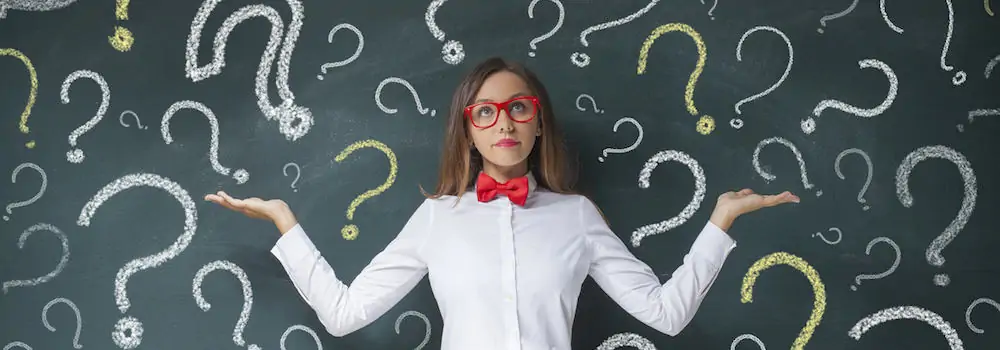
What Source Type Should I Choose?
Technology has changed the way students and teachers alike conduct research. With so many ways to digest information, it can be difficult to decide what category a source fits into. For instance, if you access a magazine article on a website, do you cite the source as a magazine article, or as a website? What about a photograph of a sculpture? Here are some rules of thumb to keep in mind when you are struggling to determine the proper format for your source:
1. If you get stuck on how to cite your source, always keep in mind what the source actually is. It is almost always better to cite a source by following its original form.
For example, you have an online magazine article. How do you cite it?
If you have a magazine article that you found online and can’t decide how to cite it, it is better to cite it as a magazine article, as that type of citation will always provide the reader of a clear understanding of where you conducted your research and found your information.
2. You should also consider citing the container of the source (see MLA format). A citation for an online magazine article, for instance, could contain information on both the magazine article and the website that reprinted it. See your citation style manual for more information on this topic.
If you still can’t tell what type of source you are dealing with, see the following info.
If you have a hard copy of your source:
If you can hold a copy of your source in your hands, such as a book, you should cite the source according to that source type’s rules. If, however, you have a printout of a section of a larger source, remember the following hints:
- Look at the bottom of the page for a full or partial URL. If you see one, use that to track down the original source.
- If no URL is present, find an important sentence and copy it into a Google search. The search should let you know what type of source your material is.
- Sometimes it’s hard to tell the difference between journal articles and book chapters when you only have a printout. To tell the difference:
- Journal articles usually include a lot of information on the first page. Look for full citation information, contact information for the author(s), or information about when the article was submitted, revised and accepted.
- Journal articles will (sometimes) provide more information on interior pages, such as the author's last name or an abbreviated article title or journal title.
- Book chapters usually include only the author's name and chapter title on the first page of the chapter.
If you found your source in a database:
Most databases and research tools will identify the proper source type for your piece of material. You just need to know where to look. Two things to keep in mind:
- The databases rely on information from the publishers to identify the source type. This information is not always accurate.
- There is no consistent vocabulary used to describe source types. Look for keywords like “print” or “article.”
If you found your source on a website:
These days, most traditional print sources, such as newspapers, also have a website. Those websites can replicate print content or provide unique, web-only content. Therefore, it can be difficult to differentiate between original and reprinted writing. For example, is a blog post on a newspaper's website a blog post, or is it a newspaper article?
- First, look to see if you can find an “about us” page on the website. This could hold a lot of valuable information about the publisher, which could lead to more clarification on what the source is. For example, if the about us page shows that the publisher is a news agency, then you know you’re dealing with a source related to newspapers.
- You can also try going to the site’s homepage. This should give you more valuable information about the publisher.
- Type the organization’s name into a Google or Wikipedia source. The history of the organization or publisher should let you know what kind of works they typically publish.
Still confused? Your librarian should be able to answer any question you may have regarding citing sources.
Need APA citations? Or a Works Cited page in MLA, Chicago, or another citation style? Go to BibMe to generate citations quickly! ...
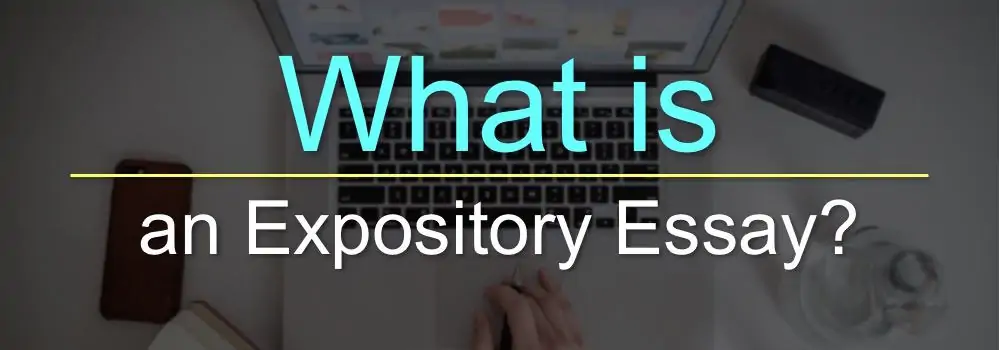
What is an Expository Essay?
Students of all disciplines and subject areas are tasked with writing expository essays at some point in their studies. So what is an expository essay, and how do you write a great one? Read on to find out!
Definition:
An expository essay requires the writer to research and investigate an idea, gather supporting evidence, and present a point of view or argument on the topic. This can be done through multiple methods, including compare and contrast, cause and effect, or examples. Simply put, and expository essay is a research paper.How to write a great one:
There are many ways to write a great essay, however all expository essays follow the same basic steps. One effective method of writing is known as the POET method.P for Purpose
- Every expository essay has a purpose. Sometimes the topic is selected by your teacher. Other times, it is up to you to select a topic to write about.
- If you are selecting your own topic to write about, be sure to choose one that is specific enough to tackle within the confines of an essay.
- If your teacher has chosen the purpose or topic for you, be sure to pay attention to the verbs in the prompt. Look for words such as analyze, compare, connect.
- Strong essays are consistent throughout, never deviating from the central purpose.
O is for Organization
- Start your essay with an introductory paragraph. This should set the stage for the rest of the paper and include your thesis statement, which we will discuss later. The introductory paragraph is your opportunity to grab the reader’s interest and attention for the rest of the paper.
- A good essay should be well organized into body paragraphs, with each describing a certain supporting piece of evidence and how it connects to your purpose.
- Each paragraph should have a topic sentence, which demonstrates to the reader what the paragraph will be focusing on. Be sure to focus on how each body paragraph supports your thesis.
- End your paper with a conclusion paragraph. This should not simply be a re-statement of the thesis statement. Instead, think of how each piece of evidence you presented ties back to your thesis. Be sure to avoid introducing new ideas in the conclusion.
E is for Evidence
- Great essays do more than simply make claims. Instead, they present an idea that is backed up by evidence found in outside sources.
- Your evidence should be from reputable and well-respected sources.
- Be sure to cite each source that you use to form the evidence of your paper. This is very important, as it demonstrates your commitment to research for your topic, and will prevent accusations of plagiarism. BibMe has citation services that can help you create a bibliography in MLA format, APA format, or other citation styles.
T is for Thesis
- Your thesis statement is the driving idea for the rest of your paper. It is the point of your paper, and is what each body paragraph and piece of evidence attempts to support.
- Generally, your thesis statement should be the last sentence of your introductory paragraph.
- Be careful not to simply re-state the purpose or prompt. Instead, it should preview what your thoughts on the topic are, and how you plan to solidify your claim. Be as specific as possible.
Weak thesis: Too much time spent on a digital device is bad for children.
Strong thesis: Although electronic devices can provide educational content, parents should regulate the amount of time children spend on digital platforms, as they can inhibit social interaction, shorten attention spans, and cause unhealthy sleeping habits.
Before turning in your paper, don’t forget to do a final proofread of your paper. It’s a good practice to review your final draft for spelling, formatting, consistency, and other grammar considerations. There are also online grammar check services that automatically scan and proofread our paper for you.
These steps will create a more robust, well-thought-out essay. Now that you know the basics, go out and begin writing with confidence!
Need APA citations? Or citations in MLA, Chicago, Harvard, or another style? Try BibMe’s citation services. ...
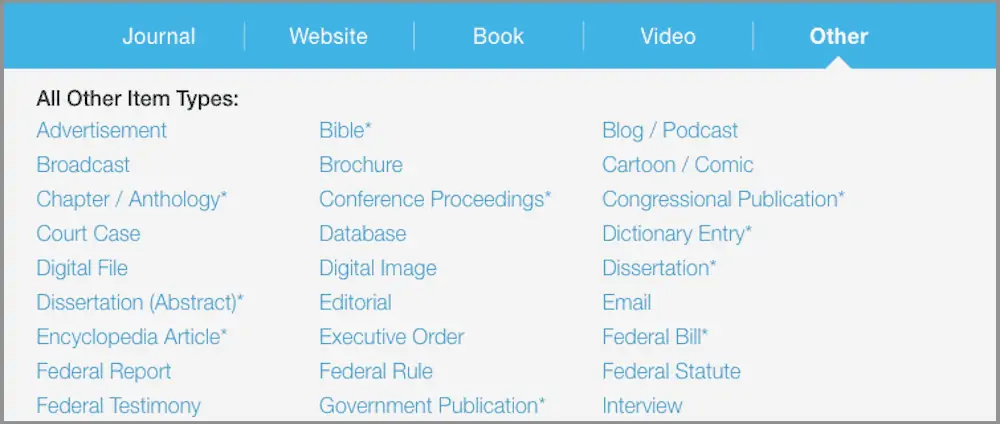
BibMe Feature Spotlight: Source Type Options for Easier Citing
Have you ever struggled to identify what source type you are using for research, or to figure out how to format a citation for a particular source? With so much information on the Internet and in the world, it’s not always an easy task. That’s why BibMe offers citation services for several different source types!
BibMe supports citing not only books, journals, and websites, but also materials such as federal bills, artwork, and even maps. Basically, if your teacher has assigned or helped you find it, BibMe can help you properly cite it.
With BibMe you can use a variety of reliable sources to make your paper more well-researched and stand out from the crowd. Using documents such as maps, letters, and the like could also help when you are searching for primary sources to use in your paper.
Say that you need an APA citation. Go to www.bibme.org, select "APA" as your citation style, and our full list of source types will be displayed, as follows:
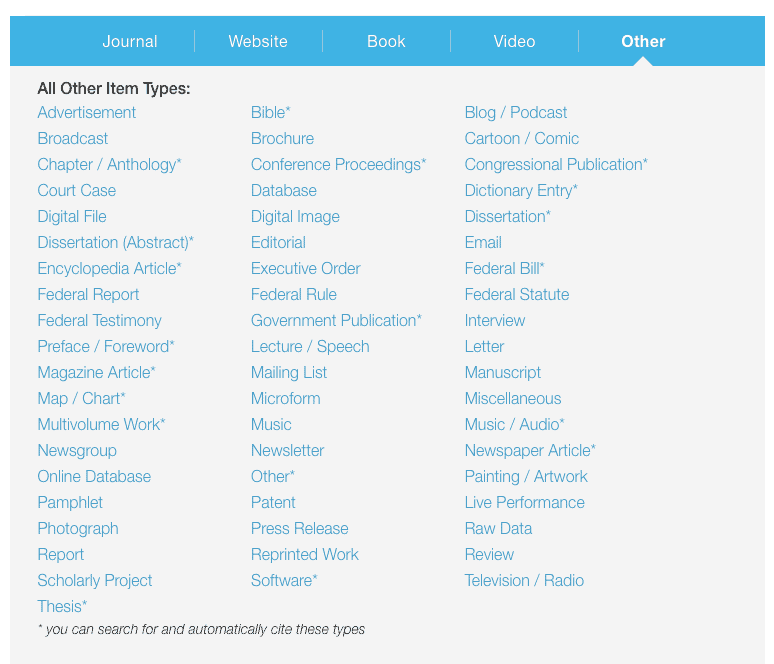
Want to explore all of the source type options BibMe has to offer? Visit our homepage and start citing today! Citation services are offered in MLA format, APA format, and more!
Done citing and writing? BibMe Plus offers both a plagiarism and grammar check via a single upload! It will review your paper and help you identify potential issues. Try it today!
...
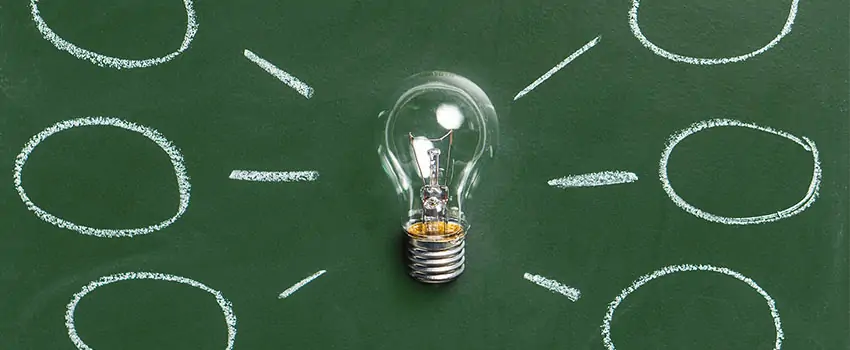
How to Write a Hypothesis
What is a Hypothesis?
A hypothesis is your initial prediction about your topic or argument. Although you’re probably used to writing hypotheses in science, you can also use them effectively in other areas of research. Why Start With a Hypothesis?When researching, creating a hypothesis gives you a place to start from. It helps you frame your research and know what to look for. Sometimes, your research question is just too big. When you start with a hypothesis, it can help you narrow your scope and figure out what information to focus on.
For example, instead of starting with the topic of the United States, which is very broad and may have too much information, you might choose the thesis “The United States almost lost the Revolutionary War,” which would help you narrow your search to information on the American Revolution.
What Should a Hypothesis Look Like?
You shouldn’t worry about creating a hypothesis that is right or wrong. It’s just a prediction! As you research, you will find out if your guess was correct.As you write your hypothesis, make sure that it:
- Relates to the topic
- Uses higher order thinking
- Looks like an argument
“What would the United States be like if we never fought the Revolutionary War?”There are a lot of possible answers to this question. A hypothesis will help you focus on specific pieces of information.
Hover your mouse over the blue and green icons to learn more about why the examples below are or are not good hypotheses.

Beginning Your Research: Identify the Information You Need
Once you have a hypothesis, you can identify what information you need to find out. Most likely, you will need to find data and evidence related to your prediction. This evidence may support your prediction, or it may prove it wrong; both are okay! The point of research is to learn, not to be right.If your hypothesis is, "The United States would be a much smaller and less diverse nation if we never fought the Revolutionary War," some of the information you will need to gather includes:
- Statistics on population and diversity before the war and today
- Specific examples of how fighting the war did or did not lead to greater diversity
- Specific examples of how fighting the war did or did not lead to the nation growing
Conclusion
Creating a hypothesis is helpful and will be the central theme of your project. Don’t be afraid to explore different options before deciding on one that you like the most.
---
As you research, it's ethical to build a bibliography to keep track of the sources you use to support your hypothesis. Easily make one in MLA format, APA format, Chicago, or more with BibMe citation tools. Our premium BibMe Plus service also offers a grammar check to help you improve your writing. Try it today! ...

Library Basics: Using the Catalog and Other Resources
Libraries are treasure troves of information, ready and waiting to answer your every question. However, navigating through their information and finding your answers can be intimidating for those new to a library.
We want to everyone to walk confidently into their local or school library, so we’ve put together this short guide to help anyone use a library catalog, locate materials on a shelf, understand what databases are, and determine if search engines are appropriate for your research.
Library Catalog
Libraries organize lots of items – sometimes thousands or millions of them! – in a special way, so that anyone can find an item they are looking for. No one expects you to memorize where every book is kept on the shelf. Instead, to help you find sources, librarians create catalogs which store information about every item in the library, and where you can find them.
The library catalog is like a search engine that helps you find items in your library. You can search for items by title, author or subject. You can also do a general search for keywords like "dinosaurs," “Italian cooking,” or "voting rights".
The main page of your library usually has a link to their catalog. If you are unsure of where to find this, ask a librarian. The library catalog may also be called an OPAC, which stands for an Open Public Access Catalog.
Each item in a library catalog has its own catalog record. Catalog records include information about an item such as the author, title, publishing date, type of item (book, DVD, map, etc.), the item’s status (available, checked out, lost, etc.) and the call number. The call number tells you where you can find an item in the library. Typically, nonfiction books have a combination of letters and number, while fiction books usually just have letters. Here are a few examples of call numbers:
Fiction
“Catcher in the Rye” by JD Salinger – Call number: YA FIC Salinger
“The Night Circus” by Erin Morgenstern – Call number: FIC C
Nonfiction“Gulp” by Mary Roach – Call number: 612.3 R
“On the Origin of Species” by Charles Darwin – Call number: 576.82 D
The Dewey Decimal SystemWith so many items in a library, it is really important that they stay organized. Librarians use a classification system to organize items in a library. That way, people can easily find what they are looking for every time they come to the library!
Most schools and public libraries organize nonfiction books and other items using the Dewey Decimal System. University and college libraries tend to use the Library of Congress Classification System. There are other types of organization systems that libraries use, but we will focus on the Dewey Decimal System.
The Dewey Decimal System was invented by and named after a librarian named Melvil Dewey. His system is made up of numbers that are associated with general categories, like technology, art and religion.
For example, here is the outline of the first 5 categories:
- 000’s – General Works
- 100’s – Philosophy
- 200’s – Religion
- 300’s – Social Sciences
- 400’s – Languages
Call numbers tell you where to find nonfiction items in the library. You can find the call number in the catalog record, listed under Call Number, Location, Shelf Number, or something similar. Ask your librarian if you are unsure of where to locate the call number in the catalog record.
Breaking a Call Number Apart
The longer the call number is, the more specific the topic is. For example, let’s look at the 300’s category.
300 – Social Sciences
- 310 Statistics
- 320 Political Science
- 330 Economics
- 340 Law
- 350 Public administration & military science
- 360 Social problems & social services
- 370 Education
- 380 Commerce, Communications & transport
- 390 Customs, etiquette & folklore
Let’s now examine a call number we found on women’s voting rights and break it down:
324.623 V
In the Dewey Decimal System, books organized within the 300 category are about the social sciences, such as politics or law. Items organized under the number 324 are specifically about the political process, such as acquiring voting rights.Going into even more detail, books organized under 324.623 are about the women’s suffrage movements. The letter at the end (“V”) is the first letter of the author's last name.
As you can see, there is a very organized process to keep books sorted. In fact, if you didn’t yet have a book selected, you could browse the 324 section of the library for voting rights books since you know that section is about the political process.
Call numbers are just like street addresses. They will tell you how to find what you are looking for!
Find It on the Shelf
In order to find your book on the shelf, you will need to see where books cataloged under 324.623 are stored. Most libraries have signs on the side of each bookcase with a range of call numbers, such as 125.3 – 178.8. If the call number of the item fits within this range, you will find it on that bookshelf!
Call numbers are printed on stickers that are placed at the bottom of the spine of a book. Items organized by the Dewey Decimal System on a shelf are sorted from left to right. In other words, you will see that the call numbers will increase as you move left to right, from the top to the bottom of the bookcase. Here’s an example bookshelf:
Nonfiction & Fiction
NONFICTION means that the content in the book or item is based on real events, people or places. These items are organized by their Dewey Decimal number.
FICTION books or items are organized by the author's last name, and then by the title of the book. Many libraries organize fictional items in a separate section of the library.
Locating E-books in a Library Catalog
When you search an OPAC, you may also find e-books, or digital books, in the search results. These aren't found on the shelves in the library, but online!
Sometimes, e-books are kept in a separate catalog from the books on the shelves. Check with your librarian to see if you can access e-books, and where you can find them.
Databases
There are other ways to find information through the library besides library catalogs. You might also be able to use databases. Databases provide access to credible content that is not always discoverable using a search engine on the Internet. In other words, databases allow you to search for and find reliable sources of information, like newspaper or journal articles, that are written by professional writers or experts.
Databases have lots of information on many different subjects, which makes them useful for all sorts of school projects. Unlike searching for information on the Internet with a general search engine, databases let you search a smaller amount of really reliable information!
Database companies charge a fee to libraries so that their users can access information within the databases. Libraries take money out of their budgets to pay for electronic databases so that you can have access to quality information!
Search Engines
Search engines are really useful tools for certain things. For example, if you want to find out what time a movie is showing at the mall, a search engine can help. In this situation, databases are not useful for finding that kind of information.
For most school projects, though, search engines are not the best option.
The quality of information found in search engines can be very different compared to information found in the library catalog or electronic databases. Search engines find information online by using things called web crawlers. Web crawlers are computer programs that collect information from all over the Internet and add it to the search engine so that you can find them easily.
However, the information that web crawlers find are not always written by experts, professional writers, and may even be totally made up!
Search engines are fast and return results quickly, but you may spend a lot of time looking through pages and pages of links on search engines. Even worse - you may come across unreliable information!
Why Should You Use Databases
There are many reasons why you should use databases for research. Here are three big ones:
- Items found in databases are written by experts or professional writers
- Databases search fewer items than search engines, making your research more manageable
- It has a librarian's approval as a useful resource!
Conclusion
Now that you know the basics, run to your school or closest public library and begin discovering information that interests you. Finding and borrowing books, videos, and other items is easy once you start; it’s stopping that tends to be hard. ----
No matter what resources you find at the library, if you use it for your project, don't forget to cite it! Cite easily in MLA format, APA format, Chicago, or more with BibMe citation tools.
...
